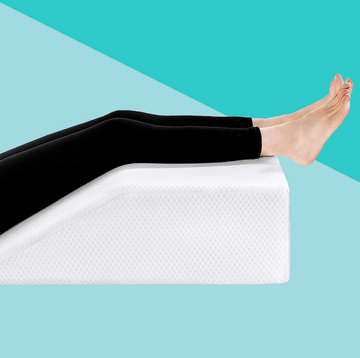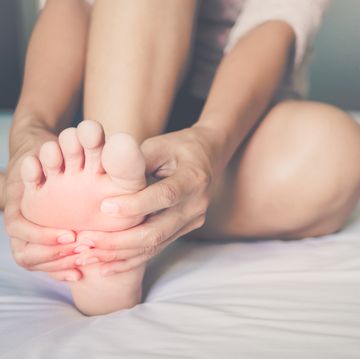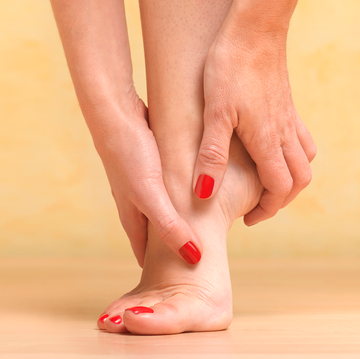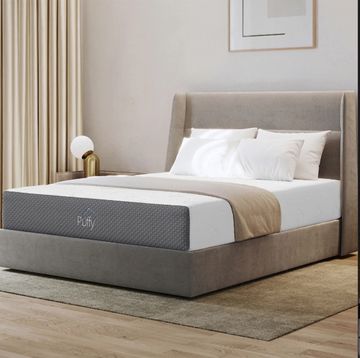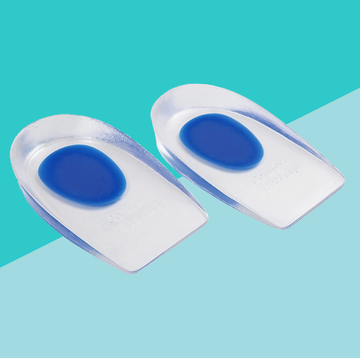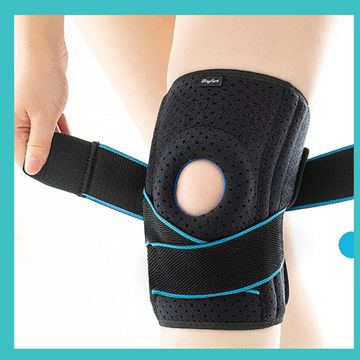If you're stretching to keep your back pain-free, you're on the right track. But the way you're stretching may actually be working against you.
Muscles work in pairs; when one contracts, the other relaxes. To effectively stretch a muscle, you have to relax it first. The traditional extend-reach-hold technique that most of us have learned does the opposite. Picture a runner stretching the back of her thighs (hamstrings). She throws her heel up on a bench, straightens her leg, and pulls her nose toward her knee. In this position, the front of her thigh (quadricep) is totally relaxed. Her hamstrings, however, are tightening to protect themselves from tearing as she holds this stressful position.
Active-isolated stretching, which we've been using for nearly 20 years, relaxes and isolates the muscle you want to stretch by contracting, or activating, the opposite muscle. So to stretch your hamstrings, you start by tightening your quadriceps. Now your hamstrings are relaxed and ready to stretch. And instead of holding each stretch for 10 or more seconds, perform short repetitions, holding each for about 2 seconds and trying to stretch a little farther each time.
We began our careers as personal trainers trying to solve a back problem that was threatening Phil's running career. Since then, we've helped to relieve the back pain of hundreds of high-profile athletes and performers, including Olympic gold medalists.Now we have designed a program to help relieve the lower-back woes that plague women during pregnancy. To get started, you'll need a sturdy chair and an 8-foot rope or cord. If you have an existing back injury, always get your physician's okay before trying any new exercise.
More than half of women will experience lower-back pain while they're pregnant, largely the result of newfound pounds piling on up front. And the pain doesn't necessarily stop after the baby's born. Carrying that bundle of love all day can strain a new mama's (and papa's) back. Read on to find out how to ease those baby aches.[pagebreak]
Trunk Sit on the edge of a chair with your back straight. Tuck your chin and contract your abs, rolling forward until your head is as far below your knees as you can reach. Then grasp the sides of your lower legs with your hands, and gently pull forward to stretch a little farther. Hold, release, and repeat for a full set.
Additional Exercises
Calves Loop a rope around your right foot. Sit with your legs straight out in front of you. (If you feel any strain in your back, bend your left leg.) Hold the rope taut. Flex your right foot back, aiming your toes toward your knee as far as you can. Then gently pull with the rope to bring your toes back farther. Hold, and release. Do a set, then switch legs.
Side Hamstrings Loop a rope around your left foot at the arch. Lie on your right side with top leg straight and bottom leg bent. Contracting your quadriceps and hips, bring your left leg straight out and up toward your face as far as you can. Keep the foot flexed and the rope taut. Then gently pull the rope to bring the leg a little closer to your body. Hold, and release. Do a set, then switch legs.
Hips Sit back in a chair with a small, rolled towel behind your lower back. Place your right foot on top of your left thigh. Contract your hip and outer thigh muscles, and press your right knee toward the floor as far as you can. Then gently press the knee down a little farther with your right hand. Hold, and release. Do a set, then switch legs.
Back Rx
- Walk or exercise daily to increase your circulation, dissolve tension, and relax your body.
- Establish a wind-down routine in the evening, after which you shouldn't exercise.
- Do these stretches daily as preventive medicine.
- Do 8 to 10 reps of each move daily, stretching only as far as comfortable. You should never feel pain. Hold each for 2 seconds.
- If your size makes a move uncomfortable, skip it.
More from Prevention: The Worst Habits For Your Back





